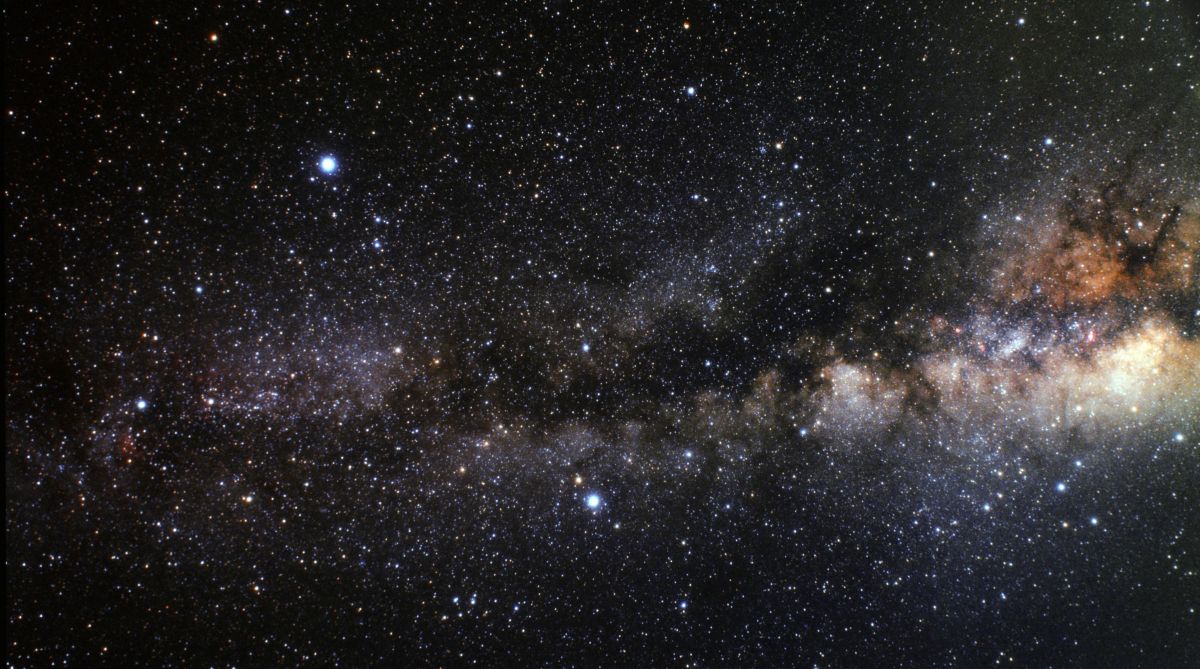Touching the Sun
The Sun, the fiery heart of our solar system, has fascinated humanity for centuries. Despite the progress of modern science, many of its secrets remain locked away, particularly the mysteries of its outer atmosphere, the corona.
There’s more to this week, celestially, than the longest lunar eclipse of the century!

The month of July is set to bring many 'celestial' surprises your way. (Photo: NASA)
It was the century’s longest lunar eclipse. Skygazers across the world watched the celestial spectacle lasting around 5 hours, though cloudy weather and rain played spoilsport at several places, including India. The total eclipse was preceded and followed by partial eclipses.
The lunar eclipse, including its partial formations and phases, lasted 6 hours and 14 minutes, while the sight of the full lunar eclipse could be relished for 1 hour and 43 minutes.
Advertisement
However, many missed the celestial event of the century for varied reasons. In India, the weather did not allow many enthusiasts to watch the spectacle, while the unearthly hour of the event deprived many others of the sight. The partial lunar eclipse began at 11.54 pm, and the total eclipse could be observed only around 1 am on Saturday.
Advertisement
READ | Do you know why July 27 Blood Moon a Micro Blood Moon or Mini Moon?
However, those who missed don’t need to lose heart. There will be another total lunar eclipse on January 21, 2019. It will be visible over north-west Africa, Europe, North America and South America. In addition, there will be a partial lunar eclipse on July 16, 2019.
However, while these celestial events are quite far away, the month of July always comes with a bag of surprises and it is no different this time too. The last week of July has a lot more in store, apart from the longest lunar eclipse in a century, for all the space enthusiasts. Let’s find out what this week brings to the table for the skygazers!
On July 28, space enthusiasts can expect to see a daytime moon. Yes! People often knead their eyebrows at the thought of a daytime moon because as per them, and their misconceptions, the Moon and the Sun are always exactly opposite to each other. No! The Moon and the Sun are exactly opposite to each other only during the occurrence of a full moon. All other times, the Moon and the Sun can be at any angle — from 0 to 180 degrees.
READ | What is a lunar eclipse? 7 universal facts
The question then becomes, how can we see a moon in broad daylight? If the Moon rises as the Sun sets and vice versa, this shouldn’t be temporally possible. Well, it is possible and this is why!
The Moon is above the horizon, which means it is visible, 12 out of 24 hours of the Earth’s rotation. But it is very rare for these 12 hours of moon’s apparent visibility to coincide with the 12 long hours of daylight. But as luck and its mechanisms work, once in a while the two coincide and we get to relish the sight of a daytime moon, which in this case will be on 28 July.
Another upcoming celestial event this week is planet Mars’ opposition to the Earth. From 27 to 30 July, Mars will be at its closest approach to Earth. The day when it reaches the closest point from the Earth, which is 57.6 million kilometres away, will be July 31; however, the moon will appear its biggest and brightest, since 2003, on July 27. Mars will reach its highest point around midnight, and is expected to be visible for much of the night. If it’s difficult for you to make the time then mark your calendars for the next one! The next closest approach of Mars will be on October 6, 2020.
READ | Blood Moon vs Blue Moon: Everything you need to know
For every constellation admirer, July end is going to be a festivity because the Orion is set to make a surprise entry — or should one call it a dramatic return. The Orion — named after the mighty Greek hunter who set out to massacre all the wild animals — is one of the most conspicuous and recognizable constellations visible throughout the world. The Orion is usually visible in northern parts of the world during the winter months as a mighty hunter, with his bow and his hunting dogs, Canis Major and Canis Minor, fighting his way through.
In summers, however, The Hunter comes back! This year, in the last few days of July and the first few days of August, if you manage to wake up just before dawn and look in the east, you will be able to locate the mighty hunter. Because of these unexpected tendencies of the Orion, it is also referred to as ‘the ghost of the shimmering summer dawn’.
So buckle up for these celestial occurrences you can enjoy, with your family and close friends, this week as July comes to a rather ‘celestial’ end.
Advertisement